Minnesota foreclosure processes vary depending on the type of foreclosure. Judicial Foreclosure is available to lenders when the deed or mortgage document gives them the legal authority to foreclose.
In this situation, a court must approve the foreclosure and a notice of sale must be published in a local newspaper. Non-judicial Foreclosure is available to lenders when the deed or mortgage document does not provide them with legal authority to foreclose.
This allows them to avoid going through the court system by providing public notice of their intent to foreclose and setting up an auction for buyers to bid on the property. Another option used in Minnesota is called Mortgage Foreclosure Counseling, which allows homeowners facing foreclosure to enter into a payment plan with their lender.
Through this process, homeowners can get an extension on their loan payments, reduce interest rates or even lower principal balances. It is important for those facing foreclosure in Minnesota to understand their options and make an informed decision about how best to protect their rights and interests throughout the process.
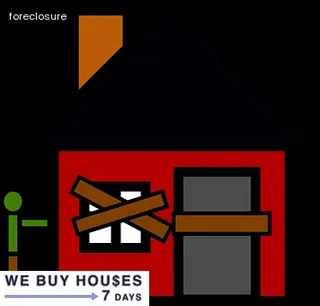
In Minnesota, preforeclosure notices are sent to the homeowner and any other parties that may be involved in a foreclosure. Preforeclosure notices provide an opportunity for those facing foreclosure to understand their legal rights during this process and to take action if they wish to save their home.
Preforeclosure notices are typically sent out by the lender or mortgage company when an individual falls behind on payments, and they must be sent out 60 days prior to the start of the foreclosure process. These notices usually provide information about the amount of time left before foreclosure proceedings begin as well as what actions can be taken in order to stop them.
The notice will also include details about how and when to contact the lender, who is responsible for paying what costs, and what options exist for repayment plans or loan modifications. It is important for homeowners facing foreclosure in Minnesota to take full advantage of this notification period by reading up on their rights, understanding all available options, and taking necessary steps towards saving their home if they choose to do so.
In Minnesota, foreclosures are either judicial or non-judicial. A judicial foreclosure is a process that is overseen by the court and requires lenders to provide evidence to the court that the homeowner has defaulted on their loan obligations.
On the other hand, a non-judicial foreclosure involves no court involvement and is usually much faster than a judicial foreclosure. Under this type of foreclosure, lenders can foreclose without having to go through the court process.
The lender must still follow certain procedures such as giving notice to the borrower of their intention to foreclose and filing documents with the county recorder's office in order to complete the process, but it can be completed in a shorter amount of time than a judicial foreclosure. The advantage of non-judicial foreclosure is that it costs less in attorney fees and other associated costs.
However, there are some potential drawbacks such as potential disputes over title or ownership if all parties do not agree on the terms of the sale.

Missed mortgage payments can have a serious and long-lasting impact on homeowners in Minnesota. When mortgage payments are not made, it can lead to foreclosure, which is the legal process of taking possession of a mortgaged property due to the borrower's failure to keep up with their payments.
Foreclosures in Minnesota can take anywhere from 90 days to over a year, depending on the complexity of the case and other factors such as whether or not the house is occupied by its owner. When foreclosed upon, homeowners are unable to keep living in their home and may have difficulty renting or purchasing another property.
Additionally, they may face significant financial losses as any equity they had in their former home is usually lost during foreclosure proceedings. The process of foreclosure in Minnesota is complicated and time consuming, so it's important for homeowners who are having difficulty making their mortgage payments understand how long it may take before they lose their home.
The length of the foreclosure process in Minnesota can vary depending on a few different factors. First, it is important to understand that there are two types of foreclosures in Minnesota: judicial and non-judicial.
Judicial foreclosures require court action, which can add to the total timeline, while non-judicial foreclosures do not involve the courts and may be completed more quickly. Additionally, Minnesota law requires a certain period of time for lenders to provide borrowers with notice before initiating foreclosure proceedings.
The type of loan that was taken out also affects the timeline; for example, federal loans typically have longer timelines than conventional loans due to additional protections put in place by the government. Finally, how quickly lenders move through the process plays a large role in determining how long foreclosure takes in Minnesota.
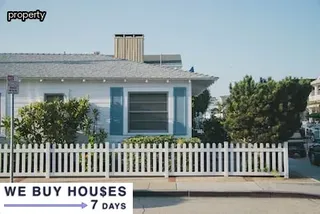
When facing foreclosure, homeowners in Minnesota have the option to reinstate their mortgage before the foreclosure sale. To do so, they must make a payment large enough to cover all of their past-due payments, late fees, and other associated costs.
The homeowner should also contact their lender as soon as possible after missing a payment. The lender may be willing to work out an alternative arrangement that would avoid the need for foreclosure.
Furthermore, the homeowner should consider whether they are eligible for any Minnesota state programs that could help them stay current on their mortgage. Finally, they must ensure they are able to make all future payments in order to keep the foreclosure process from starting again.
With these steps and a bit of determination, homeowners in Minnesota can avoid a foreclosure sale and save their home from auction.
The redemption period after a foreclosure sale in Minnesota is an important factor to consider when going through the foreclosure process. This period is determined by the state's statutory laws and depends on the type of loan that was foreclosed upon.
In general, for mortgages secured by real estate, Minnesota law allows for a redemption period of six months. During this time, the former homeowner has the right to redeem the property from the purchaser at any time before it is confirmed by a court order.
The homeowner must pay all amounts due to cure their default, including costs, taxes, and interest. If they are unable to do so during this period of time, then they will lose their right to redeem and can no longer reclaim their property.
It is important to note that if a borrower fails to make timely payments prior to a foreclosure sale or does not redeem within the statutory redemption period, they may become liable for additional sums due under Minnesota law.

In Minnesota, the foreclosure process can be long and complex, but calculating deficiency judgments is an important part of the foreclosure timeline. In order to calculate a deficiency judgment amount in Minnesota, homeowners must first understand the different types of mortgages available and their associated rights.
For example, a standard mortgage has fewer protections than an FHA or VA loan. After understanding which type of mortgage applies to their home, homeowners must then familiarize themselves with the state's deficiency laws.
In Minnesota, lenders are only able to pursue a deficiency judgment if they have received written notice from the homeowner that they intend to surrender their property before the foreclosure sale is completed. Once this notification has been received, the lender has 30 days from the date of sale to file for a deficiency judgment.
Finally, when calculating the amount of a potential deficiency judgment in Minnesota, it is important for homeowners to consider all fees associated with the foreclosure process such as attorney fees and court costs. By understanding these aspects of Minnesota's foreclosure process, homeowners can better prepare themselves for any potential deficiency judgments they may encounter during the course of their foreclosure proceedings.
Adjustable rate mortgages (ARMs) are a popular option among homebuyers in Minnesota due to the low introductory interest rates and flexible repayment options. However, ARMs can also be a risky option as the interest rate can increase over time, which can make it difficult for homeowners to make their mortgage payments.
This is especially true if their income changes or they experience financial hardship. In such cases, foreclosure may become an unavoidable outcome.
The foreclosure process can take anywhere from several months to a few years depending on the individual circumstances and is governed by state laws and regulations. In Minnesota, lenders are required to inform borrowers of their rights during the foreclosure process and provide them with ample time to cure any defaulted loans or find other alternatives such as loan modification or refinancing.
Additionally, there are certain protections for homeowners in place that could help reduce the amount of time it takes for a foreclosure to complete.

For those facing foreclosure in Minnesota, it is important to understand that there are resources available to help you through the process. The first step is to contact a HUD-approved housing counseling agency for assistance with understanding your options and creating a plan of action.
This can include advice on how to negotiate with your lender or explore other solutions such as loan modifications or refinancing. Additionally, you may be eligible for government programs such as the Minnesota Homeownership Center's Foreclosure Prevention Program which provides free services including financial guidance, education and access to state programs and resources.
Furthermore, local organizations like Lutheran Social Services provide foreclosure prevention counseling and assistance in filing bankruptcy if necessary. Finally, it is important to remember that you are not alone; there are other agencies available in the state of Minnesota that can provide additional support throughout the foreclosure process.
When facing foreclosure, it is important to know that there are alternatives to losing your home in Minnesota. One option is negotiating a loan modification with your lender which can help you keep your home by restructuring the terms of the original loan.
Refinancing is another potential solution for homeowners who have good credit and enough income to make regular payments on a new mortgage. The Minnesota Homeownership Center has counselors available to assist with this process.
Another option is a short sale, where the lender agrees to accept less than the full amount owed on the mortgage and release the borrower from their remaining debt obligation. Finally, you may consider voluntary surrendering of your property if all other options have been exhausted.
In this case, you will still be responsible for repaying any remaining balance owed on your loan but you will no longer own your home or be responsible for making payments on it.

Selling your home in Minnesota before or during foreclosure can have both advantages and drawbacks. On the plus side, if you sell your home prior to foreclosure, you may be able to receive more money for it than if it is sold through the foreclosure process.
Additionally, selling before or during foreclosure can help prevent damage to your credit score. However, selling your home may not be an option for everyone, especially if the market is weak or there are few buyers interested in purchasing a home in foreclosure.
Furthermore, selling a home that is already in the process of foreclosure can be difficult since lenders often require additional paperwork and documentation which can take time and effort to complete. Ultimately, when considering whether to sell your home before or during a foreclosure process in Minnesota, it’s important to weigh all of the pros and cons carefully as well as consider any other options that may be available.
When filing for bankruptcy in the state of Minnesota, it can have a significant impact on the foreclosure process. Bankruptcy can halt the foreclosure process and give homeowners more time to come up with a plan to pay off their debt.
Depending on what type of bankruptcy is filed, it can also reduce or eliminate certain debts and enable homeowners to keep their homes. It is important that homeowners understand how filing for bankruptcy will affect their foreclosure process as every situation is different.
The type of bankruptcy and any other existing liens or judgments could affect how long the foreclosure takes, so it is important to be aware of all factors involved before making a decision.
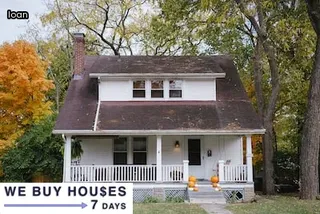
In Minnesota, homeowners who are facing foreclosure or have already received a foreclosure notice may be eligible for loss mitigation programs. These programs are designed to help homeowners keep their homes, by providing assistance with loan modifications, forbearance agreements and repayment plans.
To determine if you are eligible for one of these programs, it is important to understand the various steps involved in the foreclosure process. Knowing when your foreclosure action starts and when it ends will give you an idea of how long the process will take and whether there may be time to apply for a loss mitigation program.
It is also important to know what documents you need to provide in order to be considered eligible for a program, such as proof of income and expenses, recent bank statements and any other relevant financial information. Additionally, understanding which agencies can provide assistance during the foreclosure process is key; this includes government-sponsored entities like the Federal Housing Administration (FHA) and private organizations like housing counselors who can offer advice on the best options available.
Taking advantage of these resources can help you make informed decisions about your situation so that you can find a solution that works best for your unique circumstances.
If you are facing foreclosure in Minnesota, there are several options that could help save your home. The most common option is to refinance or modify your existing loan to reduce the monthly payments.
A loan modification can include lowering the interest rate, extending the term of the loan, or changing its type from an adjustable rate mortgage to a fixed-rate mortgage. If you are behind on payments, refinancing may not be an option; however, you can still talk to your lender about a loan modification.
Another option is to ask your lender for forbearance, which would allow you temporarily stop making payments while negotiating a repayment plan that works for both parties. You may also negotiate a deed-in-lieu of foreclosure with your lender so they will not have to go through the legal process of foreclosure.
Finally, if you have sufficient income and assets, you may be able to qualify for a repayment plan that allows you to catch up on past due payments over time as long as it fits within the guidelines of Minnesota law.
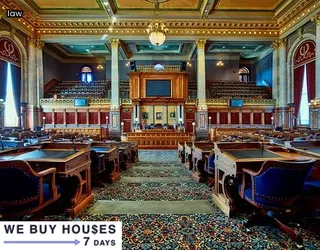
Dealing with collection agencies after a foreclosure can be an intimidating experience. In Minnesota, the process of foreclosure can take anywhere from three to nine months, and during that time, many homeowners find themselves dealing with collection agencies who are trying to collect payment on their delinquent debt.
It is important for homeowners to understand the timing of foreclosure proceedings and how to handle collection agencies during this period. First, it is important for homeowners to know that in Minnesota, mortgage lenders must file a Notice of Default at least four months prior to filing for foreclosure.
This gives homeowners a chance to negotiate with their lender before the foreclosure process begins. Second, homeowners should never ignore communications from collection agencies - this could further delay or even derail the foreclosure process.
Instead, they should contact the agency directly and explain their situation. Maintaining communication will ensure that the homeowner is aware of all deadlines associated with their debt and provide them with more control over when payments are due.
Lastly, if a homeowner is unable to make any payments during this period, they should consider requesting financial assistance through various state aid programs or seeking legal advice from an attorney who specializes in foreclosure defense.
When facing foreclosure, homeowners in Minnesota may be tempted to apply for loan modification programs in an effort to save their home. However, there are various reasons why loan modification applications can be denied.
These include a lack of sufficient income to make the modified payments, being delinquent on other accounts, not having enough equity in the home, or failing to submit paperwork necessary for the application. Additionally, if the homeowner has filed bankruptcy recently, they may not qualify for a loan modification program.
Furthermore, lenders usually require that a homeowner is at least three months behind on their mortgage payments before they can even consider a loan modification application. It is important to note that any prior defaults on agreements must be paid off before applying for a loan modification program as well.

Unfortunately, scams related to foreclosure are becoming increasingly common in Minnesota. It is important to be aware of the signs and know how to protect yourself from becoming a victim.
Start by being knowledgeable about the foreclosure process and understanding that you cannot avoid foreclosure with a single payment or by paying an individual instead of the lender. Additionally, legitimate companies will never ask for an up-front fee or guarantee they can stop the foreclosure process.
Be wary of anyone who promises quick solutions or tells you not to contact your lender or lawyer. Furthermore, make sure to always read any documents before signing them as scammers may include hidden clauses that could financially hurt you later on.
Finally, if something does not seem right, trust your instincts and contact your local housing authority or attorney for assistance.
As a homeowner in Minnesota, you have certain rights during the foreclosure process that must be respected by your lender. These include being notified of the foreclosure filing, as well as being able to present evidence in court to contest the foreclosure.
You are also entitled to receive a notice from your lender at least 30 days before a sheriff's sale or auction is scheduled. This notice must include information about the date, time and place of the sale or auction, and will be served on you at least five days prior to the sale or auction taking place.
Additionally, if your mortgage is insured by FHA or VA, then you are entitled to receive a notification of default within 45 days after the default occurs. Finally, you have the right to redeem your home up until 5 p.
on the day prior to auction or sheriff’s sale by paying all past due payments plus costs and fees associated with foreclosure proceedings.

It is important to be prepared when dealing with your lender during a potential foreclosure situation. Before you begin the process of foreclosure, it is important to understand the laws and regulations in Minnesota regarding how long a foreclosure can take and what options are available.
It is also beneficial to have all of your financial documentation readily accessible and organized so that you can easily provide information to your lender if needed. Additionally, it's crucial to stay in communication with your lender and keep track of any deadlines or requirements that must be met in order for your case to be resolved.
Lastly, understanding what resources are available to you such as legal assistance or financial counseling, can help you manage the entire process and ensure that you get the best outcome possible.
Foreclosure in Minnesota is a process by which the lender or mortgagee obtains possession of a mortgaged property due to the borrower's failure to make payments or comply with the terms of the loan agreement. It typically begins when the lender sends a Notice of Default and Intent to Foreclose, informing the borrower that they are in default and that foreclosure proceedings have begun.
The foreclosure process then proceeds through several steps, including an auction sale of the property, notification to interested parties, and possession by the lender. The entire process can take anywhere from a few months to over a year depending on various factors such as whether any legal proceedings are necessary and if there is any delay in obtaining court approval for foreclosure.
By understanding these various steps, borrowers can better prepare for what may be involved in their particular situation.
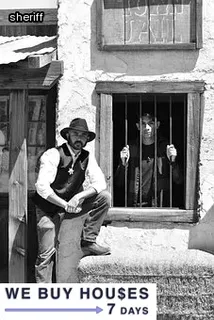
In Minnesota, the statute of limitations for foreclosure is six years. This means that a lender must file a lawsuit within six years of the borrower's default on their mortgage loan.
However, this does not necessarily mean that the foreclosure process will take six years; it simply establishes the maximum amount of time lenders have to begin the foreclosure process. Once a lender has filed suit and obtained a judgment, the borrower has up to one year before the property can be sold at auction.
During this time, borrowers may be able to come to an agreement with their lender or seek alternative solutions such as loan modifications or refinancing. Ultimately, how long foreclosure takes in Minnesota depends on several factors including whether or not a borrower is able to work out an agreement with their lender prior to sale.
In Minnesota, the redemption period is a set amount of time after the foreclosure sale where homeowners have the chance to reclaim their property. Depending on the type of loan taken out, and other factors, the redemption period for Minnesota foreclosures can vary.
For example, if a homeowner has taken out a purchase money mortgage or deed of trust that was used to buy their home and was recorded before August 1, 2011, they have 6 months from the date of the completed foreclosure sale to redeem their property. Similarly, if a homeowner takes out a refinance loan after August 1, 2011 then they have 3 months from the date of completion of foreclosure sale to redeem their property.
Minnesota also allows certain military members an extended redemption period of up to 12 months. It is important for homeowners facing foreclosure in Minnesota to know when their redemption period ends so that they can make an informed decision about whether or not to reclaim their home during this time frame.
In Minnesota, the sheriff's sale process is a critical step in the foreclosure process. The lender must first file a complaint with the district court, and then the court will issue a judgment of foreclosure.
Once this occurs, the court will set a date for the sheriff's sale, which is typically held on the first Tuesday of every month. At this sale, the property will be auctioned off to the highest bidder.
The money from these sales goes to pay off the debt owed on the property. It's important to note that Minnesota law requires that all bidders be given at least 30 days' notice before the sale takes place.
If there are no bids on the day of sale, then ownership of the property reverts back to the lender and they can file an Eviction Order with county court. This will result in an eviction notice being served to any occupants living on-site within five days after issuance of such an order.